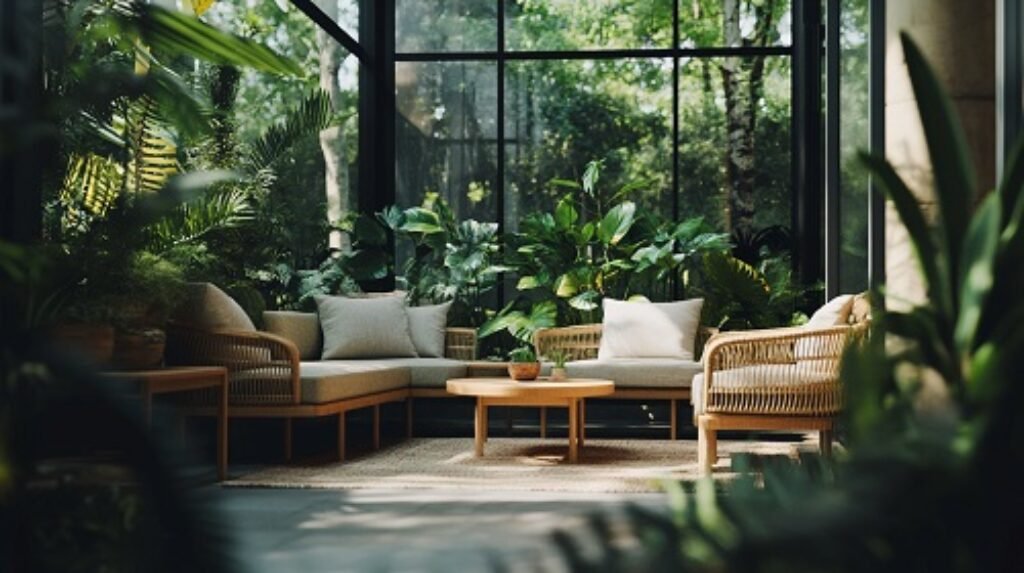Introduction:
We believe in the power of nature to transform our living spaces. Our passion is biophilic design—architecture and interior design that incorporates nature. With biophilic design, we can create living spaces that look beautiful and promote well-being and sustainability.
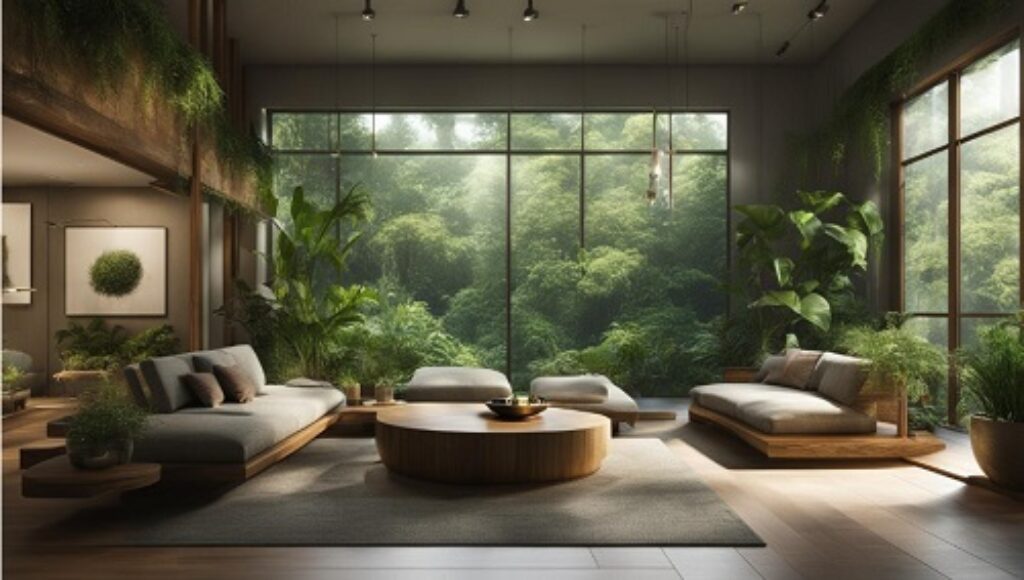
Biophilic design encompasses nature-inspired design principles, biophilic architecture, sustainable design practices, green building techniques, and the creation of wellness spaces.
By incorporating elements such as natural light, indoor greenery, natural materials, and nature-inspired forms and patterns, biophilic design enhances the aesthetic appeal of our buildings while creating spaces that promote tranquility and uplift the occupants’ lifestyles.
Key Takeaways:
- Biophilic design integrates natural elements into living spaces, promoting a deep connection with nature.
- Maximizing natural light and views enhances well-being and cognitive function.
- Indoor greenery and natural materials contribute to improved indoor air quality and sustainability.
- Nature-inspired forms and patterns create harmony and aesthetic appeal in our spaces.
- Biophilic design offers numerous benefits, including stress reduction and a closer connection to nature.
Maximizing views and natural light
One of the key elements of biophilic design is the integration of natural light and views.
By incorporating expansive windows and skylights, biophilic design maximizes access to natural light, reducing the need for artificial lighting and allowing occupants to connect with the outside world.
Sunlight has been proven to have numerous positive effects on well-being, including reducing stress, enhancing cognitive function, and improving overall mental and physical health.
Studies have shown that exposure to natural light can significantly impact our circadian rhythm, helping regulate our sleep-wake cycle and boosting our mood.
Natural light also provides the necessary vitamin D, which plays a crucial role in maintaining bone health and supporting our immune system.
By incorporating large windows that offer unobstructed views of the surrounding landscape, biophilic design allows users to engage with nature even when indoors, creating a sense of connection and enhancing their overall well-being.
In addition to well-being benefits, maximizing views and natural light also contributes to energy efficiency.
By reducing the reliance on artificial lighting during the day, buildings can lower their energy consumption and decrease their carbon footprint.
This aligns with sustainable design principles and supports a more environmentally conscious approach to architecture and interior design.
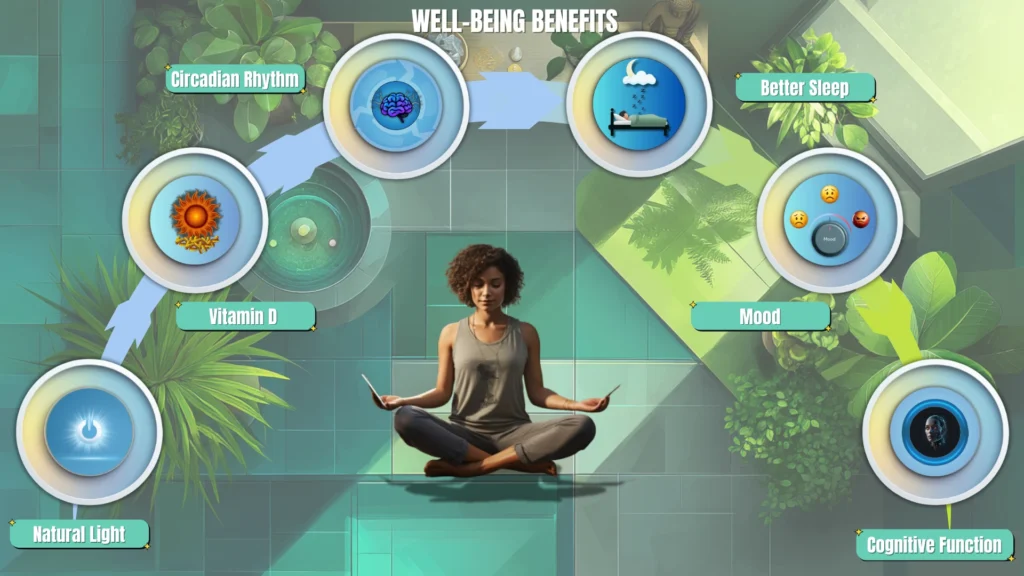
The Benefits of Natural Light and Views
“Natural light is an essential element in creating spaces that promote well-being. It has a profound impact on occupants, positively influencing their mood, productivity, and overall health.” – John Smith, Architect
By prioritizing natural light and views in design, we not only enhance the aesthetic appeal of buildings but also create spaces that offer tangible benefits to our well-being and the environment.
The integration of biophilic design principles encourages a deeper connection with nature, fostering tranquility and promoting a healthier and more sustainable way of living.
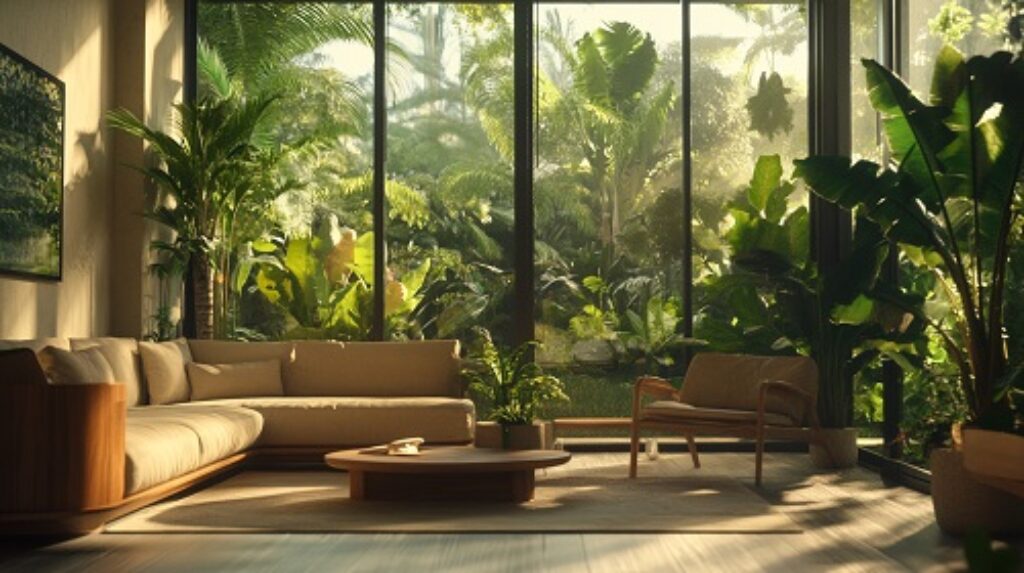
Indoor Greenery and Natural Materials
Incorporating indoor greenery and natural materials is a fundamental aspect of biophilic design. By bringing nature indoors, we create visually appealing spaces that contribute to our well-being and connection to the natural world.
Indoor Greenery: Living green walls and vertical gardens serve as captivating focal points in biophilic spaces.
They not only add a touch of natural beauty but also have numerous benefits for our physical and mental health.
Plants improve indoor air quality by absorbing pollutants and releasing oxygen, creating a healthier and more pleasant environment for us to live and work in.
Natural Materials: The use of natural materials such as wood, stone, or bamboo adds warmth, texture, and authenticity to interior spaces.
By incorporating these materials, we create a closer connection with nature and reduce the environmental impact of buildings.
Sustainable sourcing and responsible manufacturing processes ensure that our designs align with the principles of sustainable design.
Air-Purifier Plants
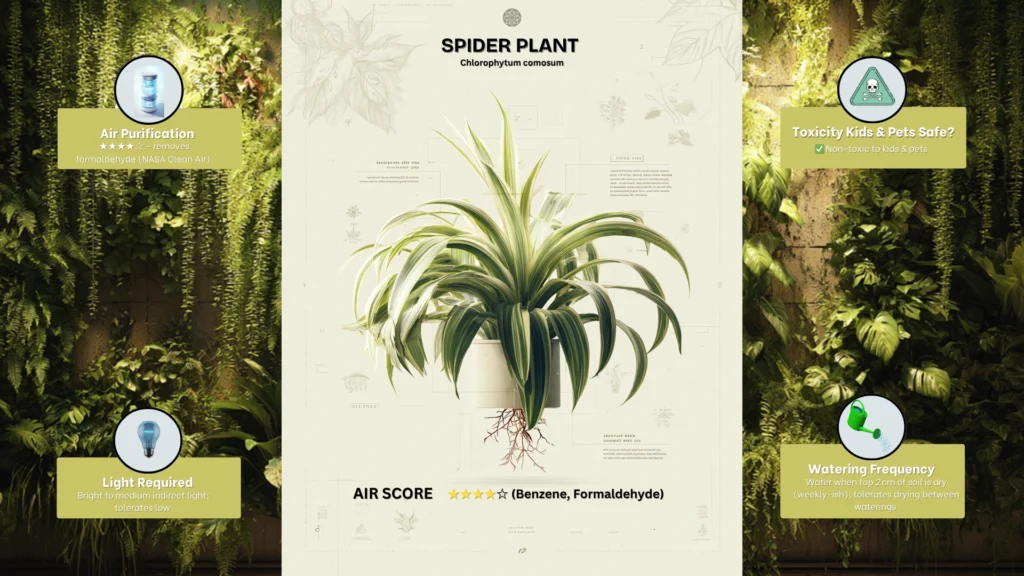
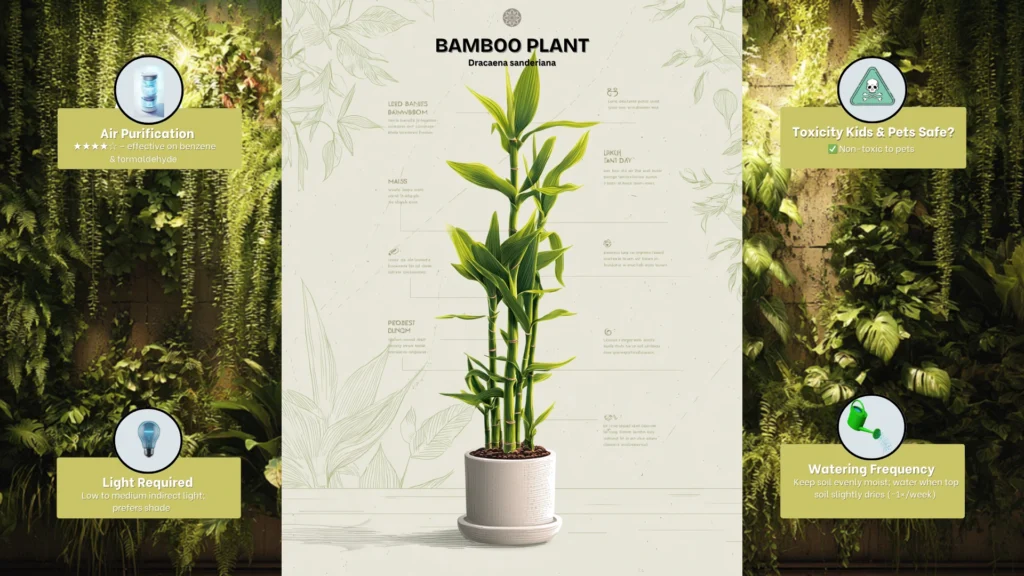
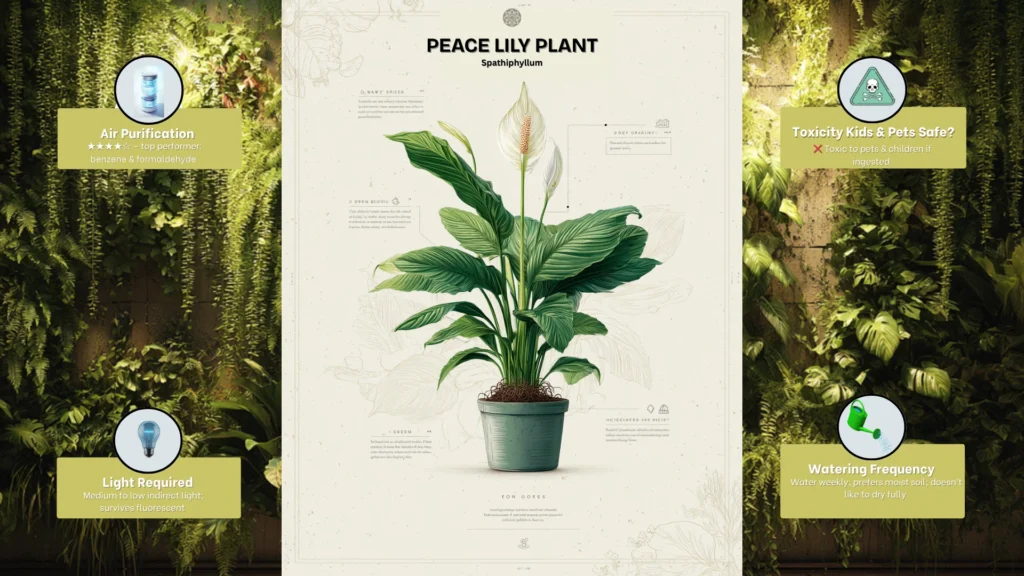
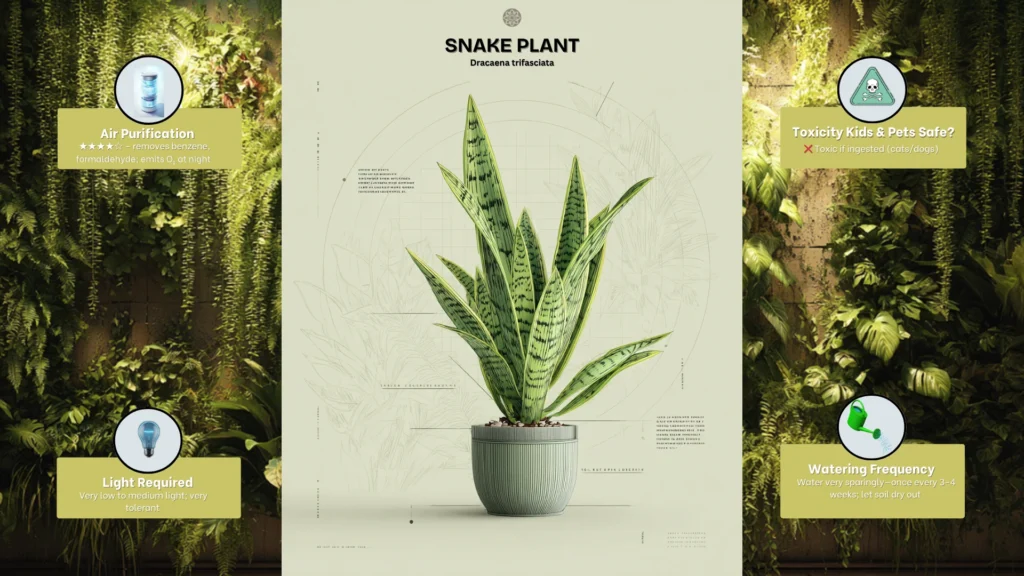
Benefits of Indoor Greenery and Natural Materials
The integration of indoor greenery and natural materials in biophilic design offers a multitude of benefits:
- Enhanced well-being: Indoor greenery has been shown to reduce stress, boost mood, and improve cognitive function. Being surrounded by natural materials evokes a sense of tranquility and harmony, promoting a healthier and happier lifestyle.
- Sustainable design: By using natural materials, we reduce our reliance on non-renewable resources and minimize the carbon footprint of our designs. This contributes to the overall sustainability of our built environment.
- Aesthetic appeal: Indoor greenery and natural materials add beauty and visual interest to interior spaces. They create a sense of authenticity and connection to the natural world, making our living and working environments more inviting and inspiring.
Incorporating indoor greenery and natural materials in biophilic design not only enhances the aesthetic appeal of spaces but also promotes our well-being and supports sustainable living.
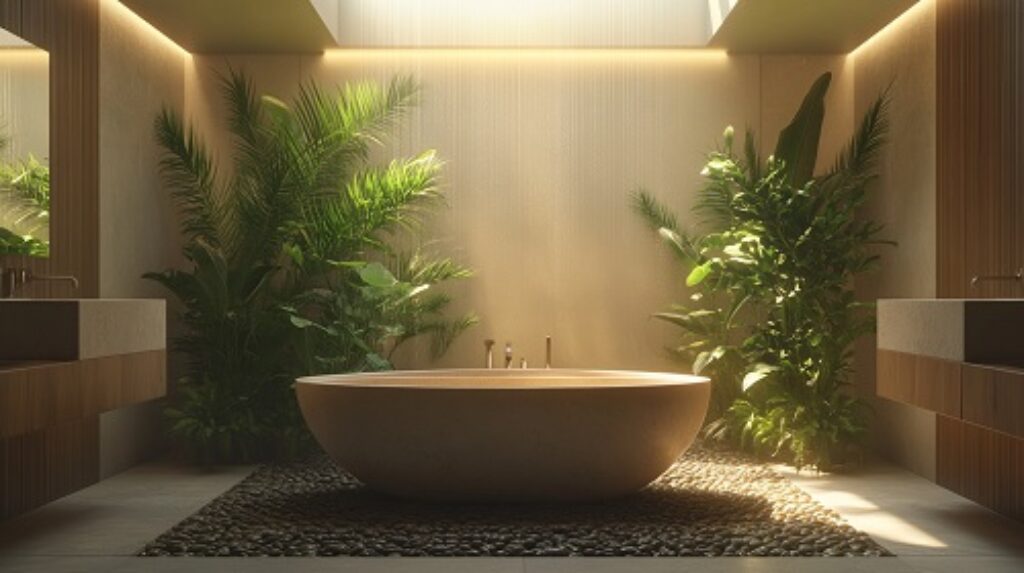
By embracing these elements, we create environments that foster a deep connection with nature and contribute to a healthier, more harmonious way of life.
| Benefits of Indoor Greenery and Natural Materials | Examples |
| Enhanced well-being | Reduced stress, improved mood, enhanced cognitive function |
| Sustainable design | Reduced reliance on non-renewable resources, minimized carbon footprint |
| Aesthetic appeal | Authenticity, visual interest, connection to the natural world |
Nature-Inspired Forms and Patterns
Biophilic design goes beyond incorporating natural elements in architecture and interior design; it draws inspiration from nature’s forms and patterns to create visually captivating and harmonious spaces.
By integrating nature-inspired forms and patterns into the built environment, architects and designers enhance the aesthetic appeal of living spaces while fostering a sense of well-being.
One way to achieve this is through the use of biometric features such as fractal patterns or organic shapes on walls and floors.
These intricate patterns mimic the natural world and have been found to evoke positive emotional responses in individuals, promoting a sense of calm and tranquility.
By incorporating these nature-inspired forms, biophilic design creates a visual harmony that resonates with our innate connection to the natural world.
Furthermore, nature-inspired color palettes, wallpapers, and motifs can infuse spaces with organic charm and create a sense of rejuvenation.
Floral designs, abstract representations of natural elements, or even patterns inspired by the movement of water or the texture of tree bark can add depth and visual interest to interior spaces, making them more inviting and nurturing.
Creating Aesthetic Appeal and Well-Being
The incorporation of nature-inspired forms and patterns not only adds beauty to the environment, but it also has a positive impact on our well-being.
Research has shown that exposure to nature-inspired patterns can reduce stress levels, improve cognitive function, and enhance overall mental well-being.
The visual stimulation provided by these patterns engages our senses, evokes positive emotions, and creates a connection to the beauty and tranquility of the natural world.
Biophilic design recognizes the profound influence that nature has on our well-being and seeks to bring those benefits into our living spaces.
By incorporating nature-inspired forms and patterns, architects and designers create environments that delight the eye, promote relaxation, and invite a deeper connection to the world around us.
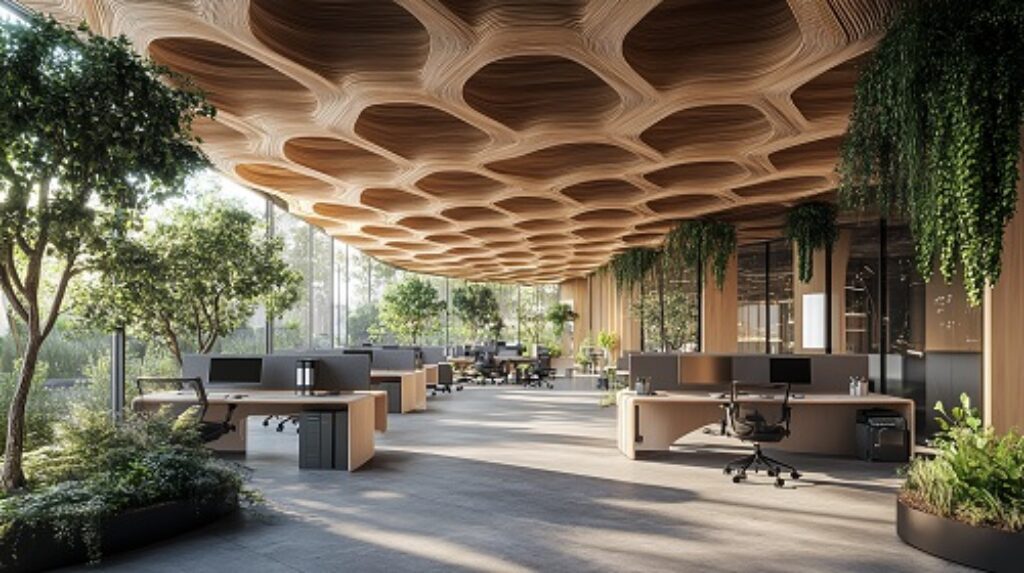
| Form/Pattern | Description |
| Fractal Patterns | Recurring geometric patterns that mimic natural shapes and structures found in plants, clouds, and coastlines. |
| Organic Shapes | Curved, flowing shapes that imitate the contours of natural elements like leaves, trees, or waves. |
| Floral Motifs | Patterns and designs inspired by flowers, petals, vines, and other botanical elements. |
| Textured Surfaces | Materials that replicate the textures found in nature, such as wood grain, stone patterns, or bamboo weaves. |
By incorporating these nature-inspired forms and patterns, biophilic design not only creates visually appealing spaces but also nurtures our well-being by bringing the beauty of the natural world into our everyday lives.
Conclusion
Biophilic design is a powerful approach that not only enhances the aesthetic appeal of living spaces but also prioritizes the well-being of individuals and their connection to nature.
By integrating natural elements into the built environment, such as natural light, indoor greenery, natural materials, and nature-inspired forms and patterns, biophilic design creates harmonious spaces that promote tranquility and uplift the lifestyle of occupants.
One of the key benefits of biophilic design is improved well-being.
Research has shown that exposure to natural light and views can reduce stress, enhance cognitive function, and improve overall mental and physical health.
By maximizing access to natural light and incorporating expansive windows and skylights, biophilic design allows occupants to connect with the outside world and reap the positive effects of sunlight.
Indoor greenery and natural materials also play a significant role in biophilic design.
Living green walls and indoor plants not only add visual appeal but also contribute to improved indoor air quality by absorbing pollutants and releasing oxygen.
Additionally, the use of natural materials such as wood, stone, or bamboo adds warmth, texture, and authenticity to interior spaces, creating a closer connection with nature and reducing the environmental impact of buildings.
Embracing biophilic design is a step towards sustainable living. By integrating nature-inspired forms, patterns, and processes into the design, architects can create spaces that harmonize with the natural world.
Biophilic design fosters a sense of calm and rejuvenation reminiscent of the outdoors, promoting a more balanced and fulfilling lifestyle.
Furthermore, the use of sustainable materials and practices in biophilic design contributes to a more environmentally conscious approach, minimizing the ecological footprint of buildings and supporting a greener future.



FAQ
What is biophilic design?
Biophilic design is a trend in architecture and interior design that aims to integrate natural elements into living spaces, creating environments that foster a deep connection with nature, promote well-being, and contribute to environmental sustainability.
How does biophilic design maximize natural light and views?
Biophilic design incorporates expansive windows and skylights to maximize access to natural light, reducing the need for artificial lighting.
It also integrates views of the outside world, allowing occupants to connect with nature and reap the positive effects of sunlight on well-being and cognitive function.
What are the benefits of incorporating indoor greenery and natural materials in biophilic design?
Indoor greenery, such as living green walls and vertical gardens, brings nature indoors and creates visually appealing focal points that promote tranquility.
Indoor plants not only add natural beauty but also improve indoor air quality by absorbing pollutants.
The use of natural materials like wood, stone, or bamboo adds warmth, texture, and authenticity to spaces, fostering a closer connection with nature and reducing the environmental impact of buildings.
How does biophilic design incorporate nature-inspired forms and patterns?
Biophilic design draws inspiration from nature’s forms, patterns, and processes.
By incorporating biometric features like fractal patterns or organic shapes on walls and floors, architects can enhance visual interest and create a sense of harmony and balance.
Nature-inspired color palettes, wallpapers, and motifs further infuse spaces with organic charm, fostering a sense of calm and rejuvenation reminiscent of the natural world.
What are the benefits of embracing biophilic design?
Embracing biophilic design improves well-being, enhances cognitive function, reduces stress, and fosters a connection to nature.
It also promotes a more sustainable way of living by integrating natural elements and using sustainable materials and practices in design.
Biophilic design prioritizes the well-being of individuals and their connection to the natural world, creating harmonious living spaces that contribute to a healthier and more environmentally conscious lifestyle.

